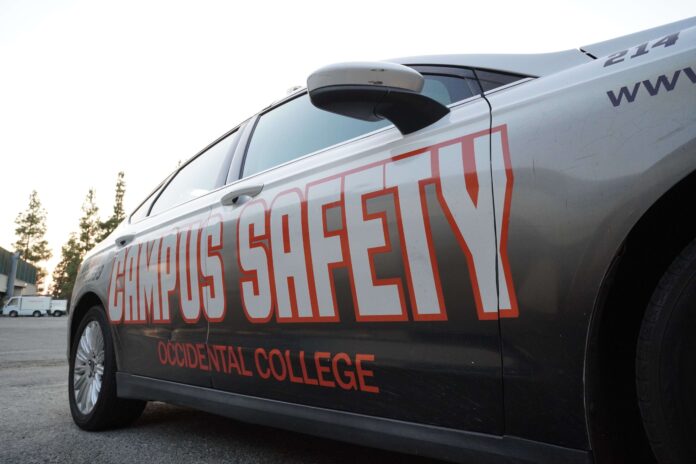
As students returned to campus in August, Director of Campus Safety Rick Tanksley said he watched a familiar pattern begin to replicate itself — unidentified men peering at students through the windows of their dorms. According to Tanksley, within the first two weeks of the semester, his office received six reports of Peeping Tom incidents, a number that he said is identical to the number of incidents reported in the same period last Fall.
Of the six recorded incidents this semester, two were not reported to the campus community via email — one at East Norris Hall Sept. 8 and the other at Braun Hall Sept. 9. According to Tanksley, this mistake was due to internal oversight.
“In one case, when the officers hastened to respond to the call, the officers thought [that] each other had made the administrative notification to me and my assistant director,” Tanksley said. “In the second case, me and my assistant director got our wires crossed as to who was going to send out the notification. That had never happened before.”
While the Clery Act does not require Campus Safety to send campus-wide emails regarding Peeping Toms, Tanksley said he has always sent out notifications. Students, faculty and staff can also find information in the Daily Crime Log on Campus Safety’s website, Tanksley said.
“Under the Clery Act, Peeping Tom doesn’t fall within that category where I have to make a campus-wide notification. However, since I arrived here, I’ve always felt that something like that is a serious incident on a college campus — and even out in the community — but especially on a college campus,” Tanksley said. “So it’s always been my practice since I arrived to send out that notification to not only students but faculty and staff.”
According to Tanksley, in the past two years, Campus Safety has noticed that the number of incidents has been on the rise — during his first three years as director, there was a total of seven reported Peeping Toms. Despite extensive and coordinated efforts by Campus Safety, Facilities and Residential Life, Tanksley said that a Peeping Tom has never been caught.
What is a Peeping Tom?
According to Tanksley, a Peeping Tom is best understood as a voyeur.
“It’s an individual who, typically under the cover of night in our case, looks through a window or an opening with the purpose of spying on another for their own sexual gratification,” Tanksley said.
Such acts violate a person’s privacy as well as the College’s Sexual Misconduct policy and can be a criminal offense under California law, according to a Sept. 4 campus-wide email from Campus Safety. Tanksley said that students should report such instances immediately.
Because of the effort and intention behind the act of peeping, as well as the sexual motivation, Tanksley said there is a possibility that Peeping Toms will begin committing more serious crimes.
“I spent 32 years in law enforcement, and during that career, I’ve seen where that behavior has transitioned to more serious type behavior, whether it be stalking or some type of an assault. Because you have to think that if these individuals become confident that they can get away with it they might become more brazen in their behavior,” Tanksley said.
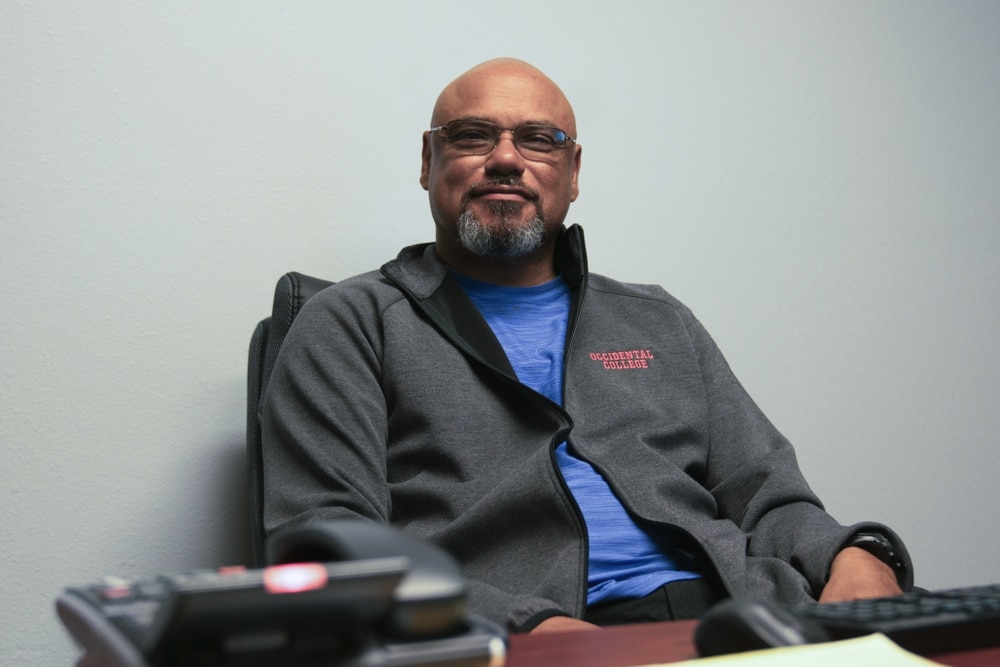
The pattern
According to Tanksley, since he arrived at Occidental five years ago, he has noticed Peeping Tom incidents occur in the same first few weeks of school each Fall. The incidents aren’t reported during the summer months, which Tanksley said leads him to believe that the perpetrators could be students.
“It could be that the perpetrator from outside the campus knows that we’re not in session anymore… But we still have students here and we still have activities going on into the evening. But yet we don’t have any reports,” Tanksley said. “Just when we come back, that’s when those things happen, which makes me believe that several of these incidents are being committed by someone from our own community.”
The quick way in which the Peeping Toms disappear once caught and reported could also support this conclusion, Tanksley said.
“If Campus Safety is not tied up on the call when these calls come in, we can be anywhere on this campus within a couple of minutes. And yet, when we receive these calls, these individuals seem to be just disappearing into thin air,” Tanksley said. “One possibility could be that the individual is a member of our community, and once observed, they’ve made their way to their own res-hall. Which, in fact, could be the same res-hall that they could have been peeping into.”
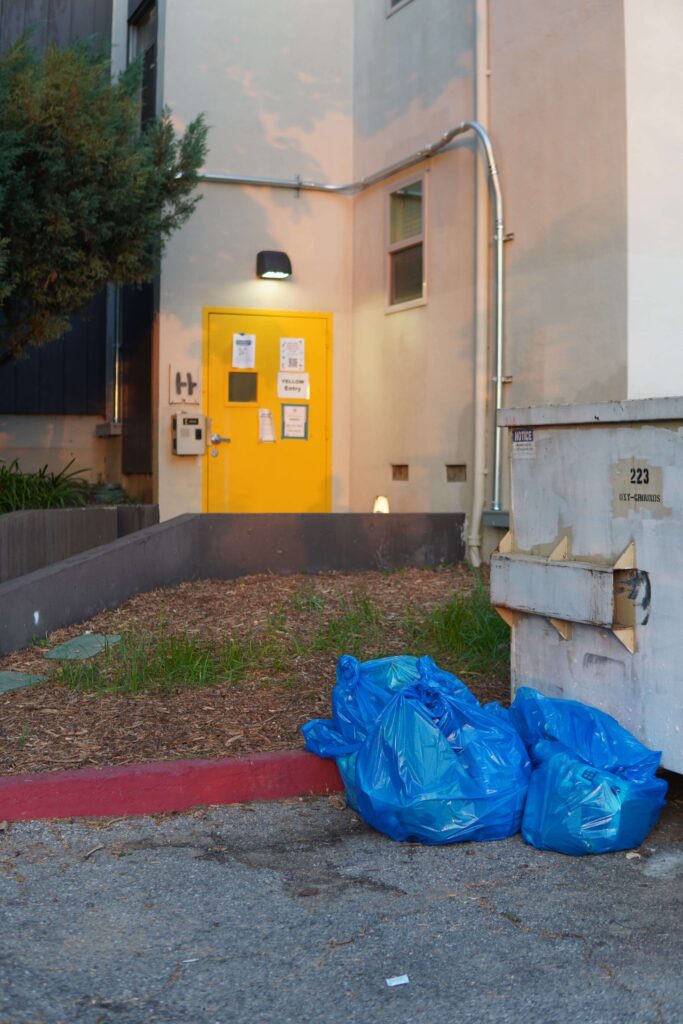
But at least one report describes the Peeping Tom as a man in his 30s, which Tanksley said could point to the perpetrator coming from outside the Occidental community.
In all likelihood, Tanksley said Campus Safety is looking at not one perpetrator but multiple — and potentially a combination of both on-campus and off-campus offenders.
Another pattern Tanksley has tracked this year is the time at which the incidents occur. According to Tanksley, the six incidents have primarily taken place on Friday and weekend nights between midnight to 1:35 a.m.
The response
Emails alerting the campus community of each Peeping Tom incident are but one aspect of Campus Safety’s response to such incidents. According to Tanksley, when his office receives a call reporting a Peeping Tom, their first move is to immediately head to the scene and begin a search. On their way to the dorm, they keep an eye out for individuals matching the description they received or who may be walking or running away from the area.
“Given the possibility that the individual could not be from our community, we’re thinking about, ‘Where is the nearest exit from our community?’ So we need to check that as well,” Tanksley said. “And if the peeper is a member of our community and they know they’ve been spotted, we try to see anybody walk into a res-hall.”
It is only after a thorough search has been conducted that Campus Safety checks in with the individual who made the report, Tanksley said. The officers reassure the student that the coast is clear for the time being and offer support resources, like contact information for Title IX and Project SAFE. Tanksley said he then follows up the next day reminding the students of those resources and sends the dean on duty to check in with the student.
However, despite this thorough response, Tanksley said Campus Safety faces a number of challenges that have repeatedly prevented them from catching the Peeping Toms.
One challenge arises from the porous nature of Occidental’s campus. Tanksley said the many entrances and exits not only permit potential Peeping Toms easy access to campus, but also individuals who have stolen bikes and other vehicles.
“These things typically take place in the dead of night, you know. So it’s easy for someone to make their way on the campus and then make their way off without being spotted,” Tanksley said. “Also Friday, Saturday and Sunday nights can be busy for Campus Safety in regards to whatever parties are happening on campus, special events or medical calls. So sometimes we can be tied up and we’re not on patrol. But yet all these entrances and exits. People come and go. So it presents a definite challenge for us.”
Tanksley said another difficulty is the lack of lighting around the sides and backs of dorms. This can allow the suspects — who are usually reported to be wearing dark clothes — to duck down into bushes and wait out Campus Safety’s search.
Where students can turn
According to Tanksley, after a student reports a Peeping Tom incident, Campus Safety directs the student to Title IX and Project SAFE.
When students meet with the Title IX Office, they are able to access a wide array of resources, from counseling appointments to housing changes, according to Civil Rights & Title IX Coordinator Alexandra Fulcher.
At Project SAFE, trained student workers provide support to fellow students through one-on-one advocacy and resource sharing, according to Director Lizzy Denny. This semester, the office will also be hosting a Campus Safety Advisory Committee with Campus Safety where students can voice their insights and concerns.
“Our goal is to have an ongoing discussion involving students and professional staff about ways we can make our campus and our community safer. We will have student representatives as well as staff from different departments who will find some tangible suggestions and goals to provide to the Oxy community in regard to community safety and wellbeing,” Denny said via email. “We will also have an email dedicated to receiving feedback and suggestions about how to continue supporting our community throughout the year and we will be working hard to make sure folks are updated about what’s going on in these discussions.”
Looking for solutions
According to Director of Facilities Management David Caldwell, there is a yearly process of identifying and instituting measures to address Peeping Tom incidents.
“Sometimes you solve one problem and another problem opens up, but we’re always trying to continually enhance and make the campus safer,” Caldwell said.
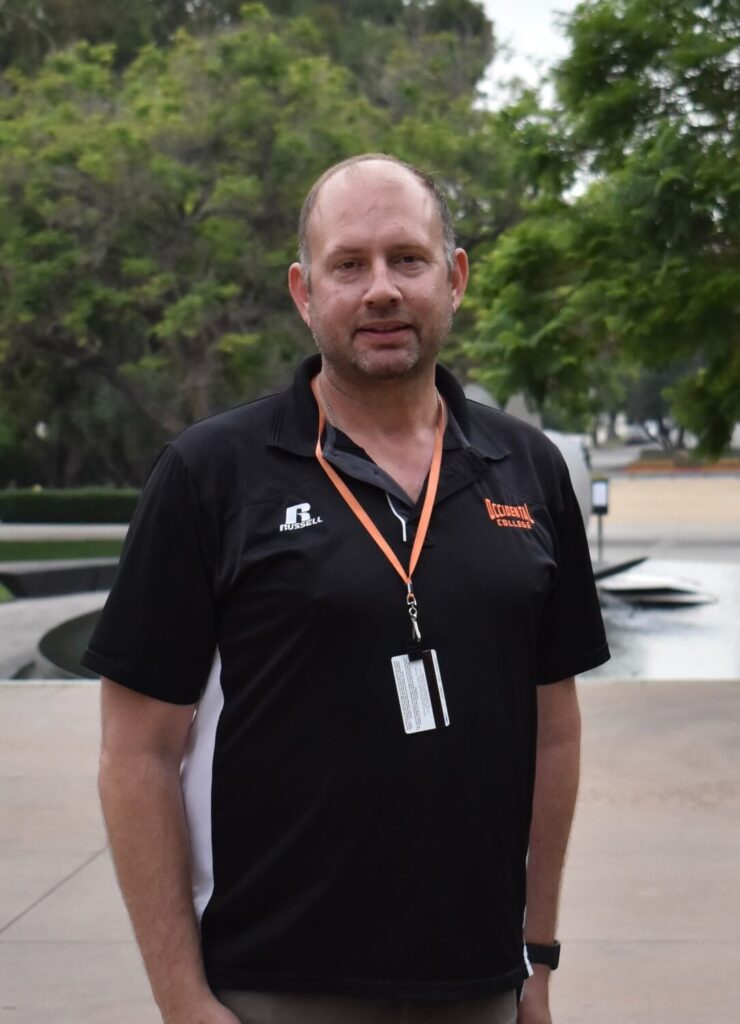
This semester, Tanksley said preventative measures start as always with the simplest of actions — closing blinds at night and not propping open outer doors.
“Everybody has a role to play in keeping this community safe and secure. Not just Campus Safety and the limited resources that we have. So that’s why we rely upon students doing their job, such as not propping open doors, lowering their blinds at night,” Tanksley said. “More and more students are closing their blinds at night, and I applaud them for that. Although it does occur, I’m seeing fewer propped-open doors. So that message is hitting home.”
In preparation for the Fall semester and the usual spike in Peeping Tom reports, Tanksley said Campus Safety participated in RA training in August, where they shared this information with RAs and asked them to encourage their residents to follow these simple but effective measures.
According to Caldwell, other solutions are broken down into near, medium and long-term goals.
In the short term, Caldwell said Facilities is looking into installing additional window treatments like blinds — the primary defense against Peeping Toms — in common rooms throughout the dorms.
A medium-term solution will be adding motion-detecting lights around the sides and backs of dorms, Caldwell said.
“What we’re doing now is looking at those out-of-the-way places. Because a majority of these incidents are happening at those out of the way locations off the footpaths and sidewalks, around the back of dorms,” Tanksley said. “So right now we’re looking at ways in which we can enhance lighting in those areas and also adding additional cold circuit cameras on campus.”
Cameras can be tricky though, Caldwell said, because of the larger discussion around the philosophy of cameras.
“Cameras, in my experience, aren’t much of a deterrent, but they help us diagnose after the fact and maybe find perpetrators,” Caldwell said. “But if you go too far with that then you’re living in a little bit of a police state where there’s cameras everywhere.”
Tanksley said another preventative measure could be moving female-identifying students to a higher floor.
“Male or female can be the victim of a Peeping Tom. But all of our reports thus far have been reports coming from female students,” Tanksley said. “So we’ve been in conversation with the director of ResEd, about the possibility of moving female students to a higher floor at some point.”
When it comes to long-term solutions, Caldwell said he is looking into ways to engineer buildings and design spaces that are more difficult to see into from the outside.
“One theory of physical security is using more plant material,” Caldwell said. “That creates [a situation in which] casual passerby’s eyes are going to be discouraged from penetrating that.”
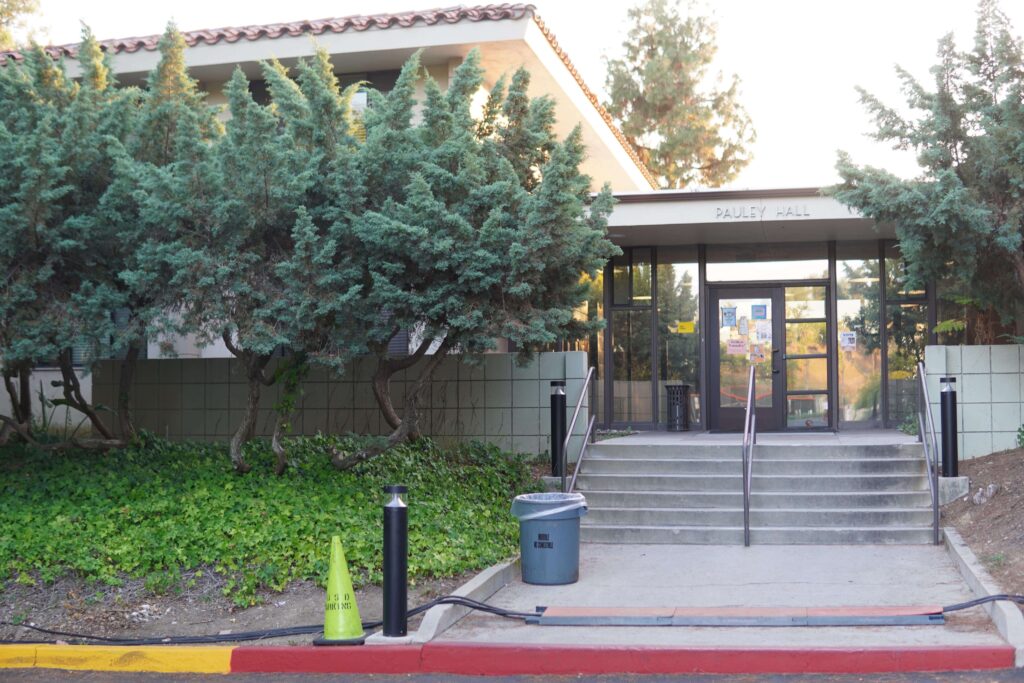
While plants take time to grow and are thus not immediate solutions, Caldwell said they’ve already begun to plant foliage outside of dorm windows, as well as cacti that can prevent someone from getting up close.
However, Caldwell acknowledged that this greenery can also exacerbate other challenges by providing more opportunities for Peeping Toms to hide from Campus Safety officers.
A final long-term solution, according to Tanksley, would entail increasing patrols both on and off campus. Tanksley said he recently hired two new Campus Safety officers and has also asked the LAPD to consider patrolling more regularly around Occidental’s perimeter.
In the meantime, Tanksley said he encourages students to do their part to prevent these incidents.
“Not only me as Director of Campus Safety and all my officers but everybody on campus is impacted by these incidents and we take it very, very seriously. And we’re always thinking about what we can do to make people feel safer,” Tanksley said. “If I ask you to close your blinds at night and you do that, well then it’s up to me to start doing what I said we would do. Increase lighting. Add those cameras. Put more people on foot. Think out of the box in regards to window treatment or whatever it may be, so that we all work together in keeping this a safe place to live, work and learn.”
Contact Claire O’Callahan at ocallahan@oxy.edu.
![]()



































The first picture of someone laughing is kind of in bad taste for an article about peeping toms…